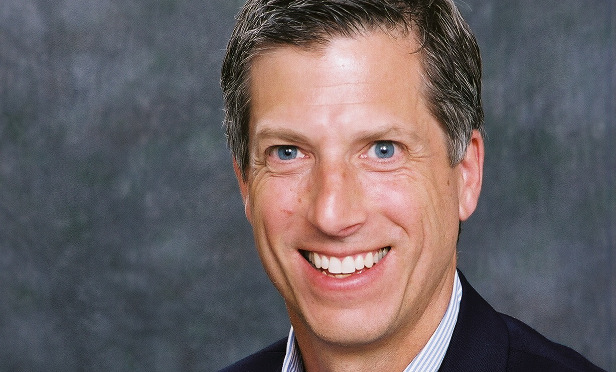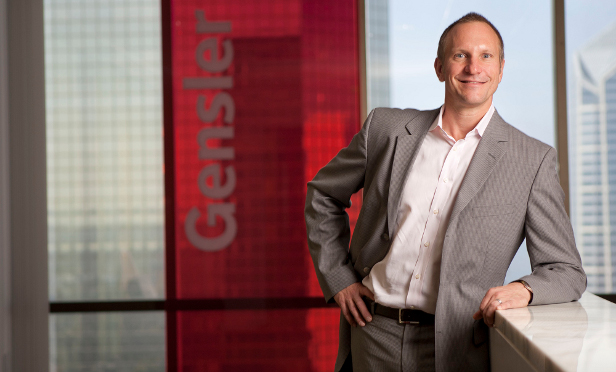 Katz: “Some of these students have gotten jobs in the industry as a direct result of the competition.”
Katz: “Some of these students have gotten jobs in the industry as a direct result of the competition.”
SAN DIEGO—NAIOP San Diego’s University Challenge, the chapter’s sixth-annual challenge among local universities, involves Seaport Village and a “world-class waterfront development opportunity,” NetREIT’s Gary Katz and Gensler’s Kevin Heinly, both board members for NAIOP San Diego, tell GlobeSt.com. The event will take place on April 21 at the Hall of Champions in Balboa Park and will involve new twists for 2016.
This year, while teams from University of San Diego Burnham-Moores Center for Real Estate, UCSD Department of Urban Studies and Planning and SDSU Corky McMillin Center for Real Estate will once again go head-to-head-to-head to create a superior development plan, each university’s team will be paired with teams from the NewSchool of Architecture & Design, adding architectural design capabilities to the teams’ skill sets. In addition to presenting a development proposal to the judges for the selected site of Seaport Village in Downtown San Diego, each team is tasked with incorporating “an iconic people-mover” that will draw locals and tourists to the site.
GlobeSt.com spoke exclusively with Katz and Heinly about this year’s University Challenge and how the event has been received by the students and the real estate community. For more information and to register to attend the University Challenge, click https://naiopsd.org/Events-Register/270.
GlobeSt.com: What’s unique about this year’s University Challenge?
Katz: What’s nice about it is it’s a real deal. It’s out to RFP by the Port district as of a couple weeks ago. This challenge is not hypothetical like in the past.
Heinly: One unique aspect is that we introduced the NewSchool of Architecture & Design as a partner in the exercise. Students are supporting the real estate teams in helping them envision the program and develop designs and renderings that will be submitted to the judges’ panel. It’s gotten a little more ambitious this year—the students will have to address more real-world issues this year than last year, and last year more than the year before that. These are the challenges they’ll have to face when they get out of school, the twists and turns they’ll have to have. While we’re not going to ask them to do an EIR or CEQA study, there is a people-mover component, a signature attraction to incorporate as well.
- Heinly: “Students say it’s one of the most impactful experiences of their education; nothing you can do in a classroom can compare to a real-life experience like this.”
GlobeSt.com: Why did NAIOP San Diego select Seaport Village as this year’s project site?
Heinly: Gary summed up one of the key reasons. Our NAIOP University Challenge committee knew ahead of time that there was going to be an RFP coming out for this project, so we decided to align with a real-life RFP process. The Port refers to Seaport Village as the crown jewel of the Port tidelands. It’s highly underutilized, so the ability to provide vision and thinking about a potential site and what it can offer the city and its community is an unparalleled opportunity.
Katz: The Port District has bought into what we’re doing. Commissioner Marshall Merrifield is one of the judges for this event, and that’s important—we wouldn’t choose a site where the owner wouldn’t feel comfortable participating in the Challenge.
Heinly: Kelly Moden of Murfey Construction used to work with the Port, and she’s also judging the challenge, so there’s good synergy there.
GlobeSt.com: How has this event been received by the students and real estate community?
Katz: It’s come a long, long way. For the first event, we had about 50 people and we practically held it in a conference room. Last year, we had more than 400 attendees. Some of these students have gotten jobs in the industry as a direct result of the competition. They got up to do their presentation, and a judge who was looking to hire seized on these folks. It’s a direct catalyst to getting a job.
Heinly: Students say it’s one of the most impactful experiences of their education; nothing you can do in a classroom can compare to a real-life experience like this. The educational aspect to thinking on their feet can’t be duplicated in a classroom setting.
Katz: There are other competitions like this, but what’s so special about our challenge is that it’s San Diego centric. This is our backyard, so there’s a lot of pride. And the fact that’s school vs. school competing, there’s also a lot of pride there, which is unique compared to the others.
Heinly: It’s important to remember that from start to finish the competition is almost two-and-a-half months long. The schools are geared up around this and they have students starting to express interest in participation. It’s pretty competitive. When you see the number of students who have graduated and come back to advise the teams, you realize how much they look forward to this challenge and how much it meant to them. It’s a thoughtful and rigorous exercise. Now that we’re rolling, doing this annually, they plan around it. There must be some other case studies in their coursework, but I don’t know if they could do another one like this—it’s a lot of effort, not an after-hours thing.
GlobeSt.com: Please explain the industry involvement in this event.
Katz: We have a panel of eight or nine judges who are all respected members of the CRE industry within San Diego. We also have a lot of involvement from each of the three teams, and each is assigned an architectural team to help guide them. This year, the architectural firms involved are LPA Inc., Carrier Johnson and Ware Malcomb. And we have other industry experts, other finance companies that help put them on the right track. So there’s a lot of involvement, and attendance is really on the radar screen for our organization. The industry looks forward to it every year.
Heinly: They have access to an appraiser, an appointed professional from the appraisal industry who guides them, and they have access to contractors and advisors on land use, entitlement and finance. These are real-world professionals they would have to engage with on a transactional basis. There’s also industry involvement with what comes out of the challenge: all proceeds go to fund scholarships.
GlobeSt.com: Tell us more about the proceeds.
Katz: The proceeds provide two scholarships per school every year, and that includes the NewSchool this year. We hope to build up a fund where we can endow these scholarships into the future. We hope to use this as a perennial source for funding scholarships annually. We’re also going to make the students’ résumé and their information available to anyone attending. If someone in the audience is intrigued by one of the students, they will have access to their résumé and can reach them for any employment opportunity they may have.


















 Copyright © 2024 ALM Global, LLC. All Rights Reserved.
Copyright © 2024 ALM Global, LLC. All Rights Reserved.